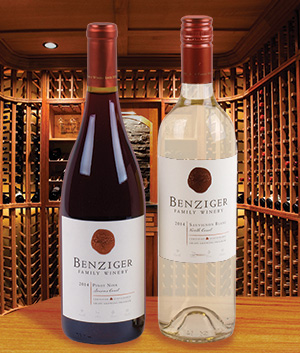 Benziger Family Winery
Benziger Family Winery
In the early 1980s, the Benziger family (not to be confused with Beringer, although they often are) migrated west from White Plains, N.Y., and started a winery on Sonoma Mountain. Winemaker Joe Benziger learned his craft by making large production wines for the Glen Ellen brand, but eventually decided that his future lay with a series of small, artisan wines, sustainably produced.
Depending on location, every Benziger vineyard is certified sustainable, organic, or biodynamic, using the most up-to-date green farming practices. But, just what does that mean? Green, sustainable, and organic are words that are often used rather casually. At Benziger, they try to be more precise.
Their third-party certified-sustainable vineyard program emphasizes environmentally-sound growing methods, such as biodiversity, soil revitalization, and integrated pest management. Their growers are required to participate in sustainable farming.
Organic grape growing avoids the use of synthetic chemicals and uses natural methods like crop rotation, tillage, and natural composts to maintain soil health, as well as natural methods to control weeds, insects, and other pests. The winery itself is certified organic, too. Organic is an evolutionary step up from sustainable. After that, many Benziger growers move on from certified organic to certified biodynamic.
Animals and beneficial gardens play an important part in biodynamic farming techniques. Benziger relies on sheep for the removal of overgrown cover crop, and they replace the need for mowing, disking, and spraying herbicides; they aerate the soil while continuously depositing nutrient-rich fertilizer throughout the vineyard.
Olive trees also support the health of the estate. Olives often grow well in the same climates and soils as wine grapes, and Benziger has been offering an Estate Biodynamic Olive Oil for a number of years.
Benziger North Coast Sauvignon Blanc 2014
This very pale-yellow sipper is made from 100% Sauvignon Blanc grapes harvested from the North Coast appellation of Sonoma County. It opens with hints of melon on the nose. There is a subtle sweetness in the taste, suggesting peaches. The acidity comes on reminiscent of Key lime. It ends with a bit of bubbly on the finish.
Pair this easy-going wine with tabbouleh, braised swordfish in white wine, or grilled shrimp in a Catalan almond sauce.
Benziger Sonoma Coast Pinot Noir 2014
This selection looks more like cherry Kool-Aid than wine, but it’s wine, for sure. The understated nose features raspberry and sweet earth. The taste is cherry, alright, but this time of the tart variety. There is a medium finish with restrained tannins.
This easy-to-drink Pinot would go nicely with steam-poached salmon, Spanish chicken with sweet peppers, or Andalusian braised lamb shanks with honey.
Back to blog posts: winervana.com/blog/

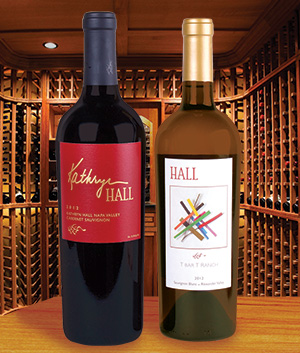 Kathryn Walt Hall has a most impressive curriculum vitae. To touch on just a few of the high points, she is the proprietor of HALL Wines and WALT Wines [family businesses she has been involved with for over thirty years], was assistant city attorney in Berkeley, California, worked as an attorney and businesswoman in Dallas, Texas, and has served on numerous non-profit and institutional boards, with an emphasis on issues related to social care and mental health. From 1997 to July 2001, Ms. Hall served as the United States Ambassador to Austria. In the midst of this, together with her husband Craig she has raised four children.
Kathryn Walt Hall has a most impressive curriculum vitae. To touch on just a few of the high points, she is the proprietor of HALL Wines and WALT Wines [family businesses she has been involved with for over thirty years], was assistant city attorney in Berkeley, California, worked as an attorney and businesswoman in Dallas, Texas, and has served on numerous non-profit and institutional boards, with an emphasis on issues related to social care and mental health. From 1997 to July 2001, Ms. Hall served as the United States Ambassador to Austria. In the midst of this, together with her husband Craig she has raised four children.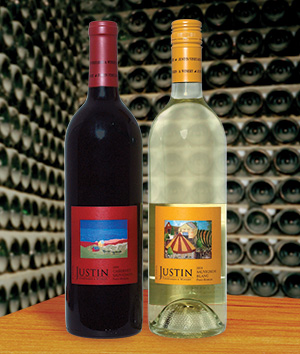 Justin Vineyards and Winery
Justin Vineyards and Winery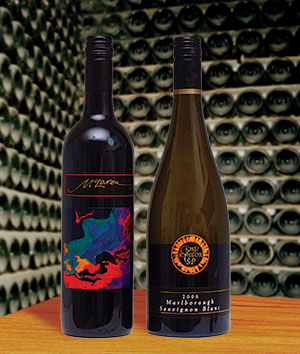 Linchpin McLaren Vale Shiraz 2004
Linchpin McLaren Vale Shiraz 2004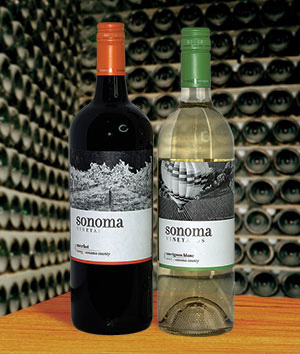
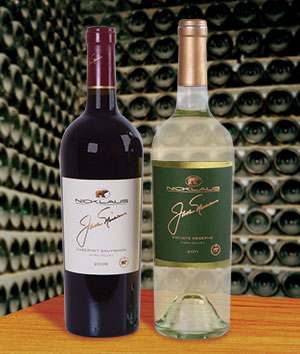
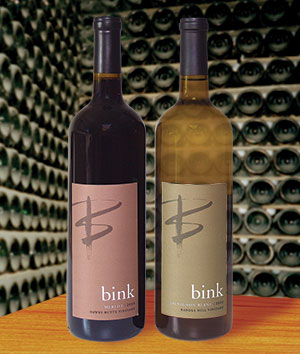 The unusually-named Bink Wines is owned and operated by two women, which is also rather unusual (but becoming less so).
The unusually-named Bink Wines is owned and operated by two women, which is also rather unusual (but becoming less so).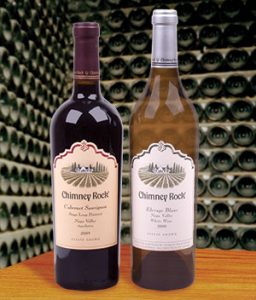 The Stags Leap District AVA is in the very heart of Napa Valley. It runs from north to south for about three miles along the Silverado Trail, and its 1,350 [very prized] acres were first planted with Cabernet Sauvignon in 1961, for which it would soon become renowned. The name comes from an outcropping of red rocks at the area’s eastern boundary, where a stag supposedly escaped his pursuers by leaping across the treacherous gap.
The Stags Leap District AVA is in the very heart of Napa Valley. It runs from north to south for about three miles along the Silverado Trail, and its 1,350 [very prized] acres were first planted with Cabernet Sauvignon in 1961, for which it would soon become renowned. The name comes from an outcropping of red rocks at the area’s eastern boundary, where a stag supposedly escaped his pursuers by leaping across the treacherous gap.